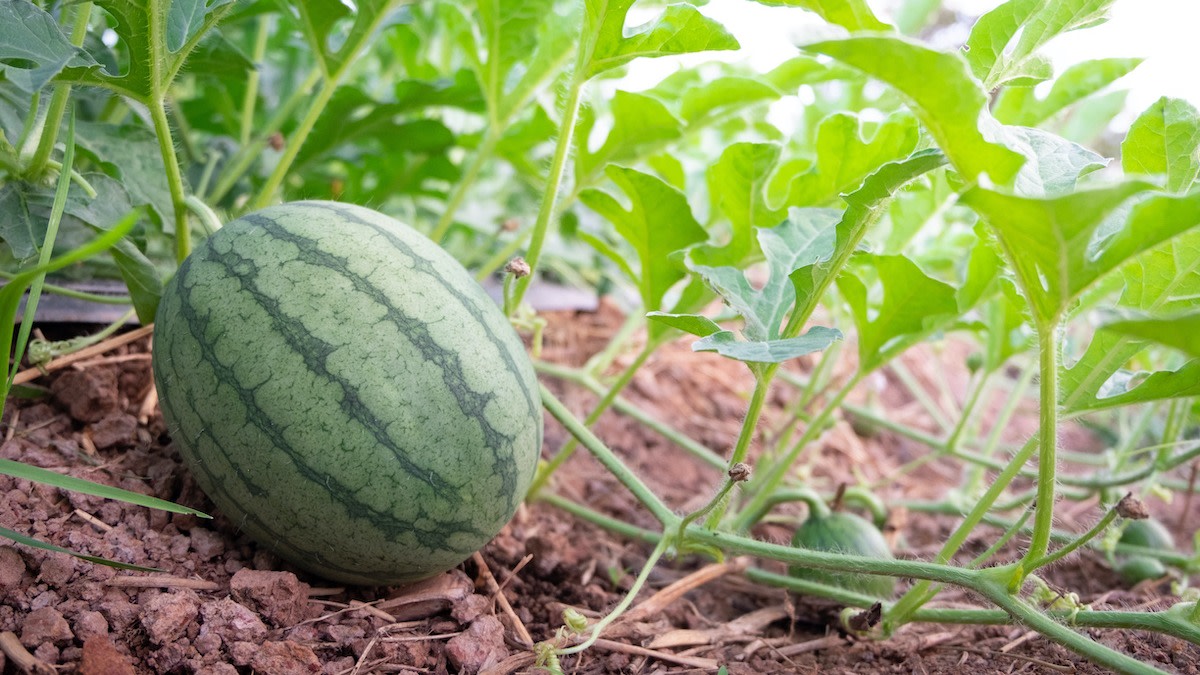How to Tell When a Watermelon Is Ripe: 6 Testing Methods
Written by MasterClass
Last updated: Jun 7, 2021 • 3 min read
Figuring out how to tell when a watermelon is ripe is a simple process that you can use whether you’re picking watermelon from the vine or the grocery store.
Learn From the Best
What Is a Watermelon?
A watermelon (Citrullus lanatus) is a flowering and vining plant species part of the Cucurbitaceae family. Botanically, watermelon is considered a fruit due to its development process—it is a flowering plant that bears fruit after its flowers bloom. Watermelons have a lightly sweet taste that can accommodate a variety of summer flavors. It is important to make sure that your watermelon is ripe because—unlike cantaloupe—watermelon doesn’t continue to ripen after it is plucked from the original vine. Watermelon can be tossed with feta for a watermelon feta salad or eaten on its own.
How to Tell Whether a Watermelon Is Ripe
There are a few ways to determine if a watermelon has reached peak ripeness, whether you’re growing watermelon in your garden at home or buying one from your local supermarket. Here are a few ways to tell if your watermelon is perfectly ripe.
- 1. Do a thump test. A ripe watermelon should have a deep hollow sound when you thump the rind with your hand, similar to a knock on the door. An unripe melon will have a more high-pitched resonance, whereas an overripe melon will sound more like a thud.
- 2. Check the field spot. A field spot (or ground spot) is the underside of the melon that rests on the field as it grows. A yellow spot is a good sign that the watermelon was left to ripen on the vine long enough. A ripe melon will have a buttery or creamy yellow field spot along its belly, and a less ripe melon will typically have a white field spot.
- 3. Feel its weight. When comparing two watermelons of the same size, the heavier one is more likely to be ripe. An unripe watermelon will feel lighter and less sturdy than a ripened, juicy watermelon. However, a melon that feels too heavy can also indicate overripeness.
- 4. Smell the melon. You will be able to smell the sweet watermelon aroma through the rind of a ripe watermelon. A watermelon is likely underripe if you can’t smell anything through the rind. However, if the smell is too strong it might be overripe.
- 5. Check the tendril. Watermelon has a curly tendril where the fruit was connected to the vine during the growing process. If the watermelon is ripe, the curly tendril should be almost completely dried out. If the curly tendril is green, the watermelon was picked too early and is not ripe. This method may not work at the grocery store but can help when growing watermelon in your own garden or choosing one at a local farmer’s market.
- 6. Squeeze the flesh. The best watermelon is juicy yet firm with just a little bit of give in the rind. If the outer rind is soft, it may indicate an overripe or malnourished fruit. You can also try pressing the blossom end of a watermelon. An unripe watermelon will have a completely solid blossom end, while an overripe melon will be mushy and mealy.
3 Ways to Store Watermelon
Storing watermelon correctly helps maintain its freshness. See below for the best methods on storing your watermelon.
- 1. For a whole watermelon: Whole, uncut watermelon can be kept at room temperature for one to two weeks or stored in the refrigerator for one week. Keep your watermelon away from other fruits—like apples—that may give off ethylene gas to avoid premature decomposition.
- 2. For a cut watermelon: If your watermelon has already been sliced or cubed, tightly wrap the pieces in plastic wrap to prevent the juice from seeping out or any air from drying the fruit. You can also keep smaller pieces in an airtight container. Cut watermelon stored in the fridge should be consumed within five days.
- 3. To freeze watermelon chunks: If you’re storing watermelon in the freezer for smoothies or soups (like gazpacho), remove the seeds from your cut watermelon chunks. Line a pan with a piece of parchment paper then lay the pieces out so they don’t touch, then store in the freezer. Once the chunks have frozen, transfer to an airtight container. Once you freeze watermelon the texture will change, so it is recommended to use frozen watermelon for smoothies and sorbet rather than defrosting.
Learn More
Grow your own garden with Ron Finley, the self-described "Gangster Gardener." Get the MasterClass Annual Membership and learn how to cultivate fresh herbs and vegetables, keep your house plants alive, and use compost to make your community—and the world—a better place.
